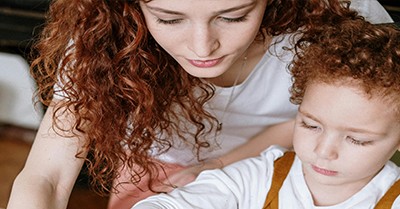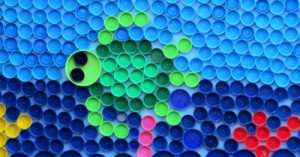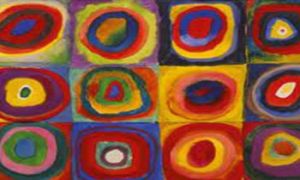Educators are encouraged to shift away from asking "What are you making?" in early childhood settings because it can limit children's creativity and self-expression. Instead, open-ended questions that invite deeper thinking and exploration are recommended.
Children’s play is not always about creating a tangible product—it’s about learning through exploration. Materials like blocks, paint, and clay help children experiment with properties, relationships, and cause-and-effect, often processing their own experiences. Asking “What are you making?” too soon can:
-
Disrupt their thought process
-
Imply there should be an end result
-
Shift focus from internal motivation to external approval
-
Create self-doubt if they weren't making something specific
The real value lies in the process, not the product. When children freely explore without the pressure of producing something recognizable, they build confidence, sustained focus, and deeper understanding.
Why This Shift Matters
-
Encourages Process Over Product: Focusing on the process rather than the final outcome fosters creativity and problem-solving.
-
Supports Critical Thinking: Asking questions like "Tell me about what you're working on" allows children to reflect on their choices.
-
Respects Individual Expression: Children may not have a clear end goal, and open-ended questions validate their exploration.
Alternative Questions to Ask
Here are alternative ways to engage children in conversation without focusing on the outcome:
Encouraging Exploration
-
"Tell me about what you're working on!" – Invites children to share their thoughts without pressure.
-
"What do you notice happening?" – Encourages observation and curiosity.
-
"How does that feel/look/sound?" – Helps children engage their senses.
Supporting Problem-Solving
-
"What do you think will happen next?" – Encourages prediction and critical thinking.
-
"How could we try this differently?" – Promotes experimentation.
-
"What do you think worked well?" – Encourages reflection.
Fostering Creativity & Expression
-
"What inspired you to do this?" – Helps children connect ideas.
-
"What do you like about this?" – Encourages self-expression.
-
"How would you describe this to someone else?" – Builds communication skills.
Further Reading
Using Open Ended Questions with Children
Importance Of Using Open Ended Questions
Scaffolding Children's Learning
Reference:
Why Educators Should Stop Asking What Are You Making In Early Childhood Settings., We Skool







 As an Educator in Australia, your pay rate falls under the Children’s Services Award 2010. This award states the minimum amount that an employer can
As an Educator in Australia, your pay rate falls under the Children’s Services Award 2010. This award states the minimum amount that an employer can When working as a qualified Early Childhood Teacher (with a university degree) within a service, your rate of pay will come from the Educational Services
When working as a qualified Early Childhood Teacher (with a university degree) within a service, your rate of pay will come from the Educational Services When working as a Diploma Qualified Educator your pay rate is from the Children's Services Award 2010. This Award states your minimum rate of pay
When working as a Diploma Qualified Educator your pay rate is from the Children's Services Award 2010. This Award states your minimum rate of pay When working as a Cert 3 Qualified Educator, your pay rate is from the Children's Services Award 2010. This Award states your minimum rate of
When working as a Cert 3 Qualified Educator, your pay rate is from the Children's Services Award 2010. This Award states your minimum rate of Educational Leaders play a crucial role in their early childhood service by ensuring that the educational program aligns with best practices and supports the holistic
Educational Leaders play a crucial role in their early childhood service by ensuring that the educational program aligns with best practices and supports the holistic In early childhood education and care, ratios are more than a technicality—they are a frontline safeguard. Every child deserves responsive supervision, emotional connection, and developmental
In early childhood education and care, ratios are more than a technicality—they are a frontline safeguard. Every child deserves responsive supervision, emotional connection, and developmental With the new national child safety reforms kicking in on 1 September 2025, early childhood services like yours have a real opportunity to lead the
With the new national child safety reforms kicking in on 1 September 2025, early childhood services like yours have a real opportunity to lead the Here’s a comprehensive Mobile Phone and Smart Watch Policy tailored for early childhood education and care (ECEC) services in Australia, aligned with the latest 2025
Here’s a comprehensive Mobile Phone and Smart Watch Policy tailored for early childhood education and care (ECEC) services in Australia, aligned with the latest 2025 The Sea of Fish Challenge is a national initiative that invites children, educators, families, and communities to create and display fish artworks as a symbol
The Sea of Fish Challenge is a national initiative that invites children, educators, families, and communities to create and display fish artworks as a symbol Across the early childhood education and care sector, educators are sounding the alarm: current staffing ratios are insufficient to deliver safe, meaningful, and developmentally appropriate
Across the early childhood education and care sector, educators are sounding the alarm: current staffing ratios are insufficient to deliver safe, meaningful, and developmentally appropriate


